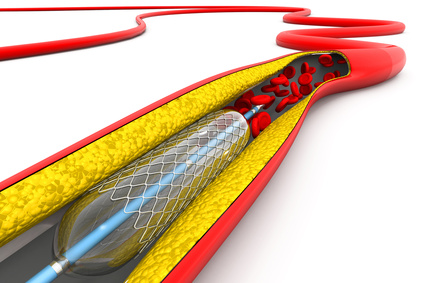Original Title: Stent Thrombosis with Drug Eluting Stents and Bioresorbable Scaffolds. Evidence from a Network Meta-Analysis of 147 trials.
Reference: Kang S et al. J Am Coll Cardiol Intv 2016 doi 10.1016.
Courtesy of Dr. Guillermo Migliaro.

Even though the recent incorporation of bioresorbable scaffolds (BRS) presents some theoretical advantages against DES, with similar outcomes, they show increased ST incidence.
The following study is a systematic meta-analysis of comparative studies including BMS, DES and BRS to assess their safety and efficacy. It included 147 randomized studies with a total 126,526 patients comparing at least two of the following:
- BMS
- DES (paclitaxel, sirolimus, zotarolimus and everolimus) in both their scaffolds, cobalt and platinum-chromium. With biodegradable polymers (everolimus and biolimus), hybrid sirolimus eluting stents and polymer-free stents.
- BRS
Safety primary end point was to assess definite or probable stent thrombosis during one year follow up. Secondary efficacy end points included the need for new revascularizations and all-cause, cardiovascular and MI death.
Results
- All DES except paclitaxel eluting stents and BRS were superior to BMS in primary end point at one year with OR 0.44 (CI 0.16-0.92, p=<0.05) for BRS compared to everolimus eluting stents (EES).
- EES in both their platforms and sirolimus hybrids were associated with significantly less ST with OR 2.28 (CI 1.07-6.29, p=<0.05) compared to BRS, OR 3.29 compared to BMS (CI 2.27-4.34, p=<0.05) and OR 2.79 (CI 2.03-3.88, p=<0.05) compared to paclitaxel DES.
- Cardiac and all-cause death did not show differences between the groups. AMI incidence was similar to ST incidence.
- All DES and BRS significant reduced the need of new revascularization compared to BMS. First generation and zotarolimus eluting DES were inferior against the rest of DES. BRS had similar risk of repeat revascularization to the rest of DES.
Conclusion
The authors conclude that all contemporary DES showed low ST risk at one year follow up. BRS were observed to increase ST compared to everolimus eluting stents.
Editorial Comment
This study represents the largest meta-analysis so far to compare the different types of stents, in terms of safety and efficacy. Once more, it has been shown how efficient the new devices are (especially EES).
One of the advantages of this analysis methodology (network meta-analysis) is the possibility to compare several devices and assess common outcomes such as stent thrombosis simultaneously. This is one of the first meta-analysis to include bioresorbable scaffolds which, despite their theoretical advantage against DES, were not able to be proved superior.
Another factor we should consider is the follow up period. In this meta-analysis, cutoff was at one year. Considering these days one of the main purposes of the new generation scaffolds is to prevent very late ST, we should carry out further research with longer follow up periods to assess this outcome.
Courtesy of Dr. Guillermo Migliaro. German Hospital, Buenos Aires, Argentina.
Your opinion matters to us. You are most welcome to leave your comment, reflection, question or any ideas down below.


